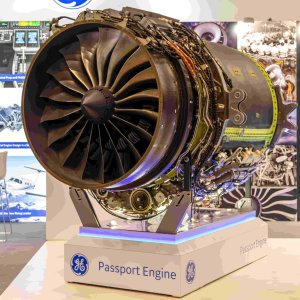
Future Vehicles May Be 3D Printed
 By Alfonso Núñez | Journalist & Industry Analyst -
Thu, 03/24/2022 - 17:10
By Alfonso Núñez | Journalist & Industry Analyst -
Thu, 03/24/2022 - 17:10
Originally used only for prototyping, additive manufacturing is now disrupting the automotive value chain and finding its way into more industrial processes. As the supply chain continues to face disruptions, additive manufacturing is an easy-to-use industrial tool through which productive processes can be maintained.
Additive manufacturing, also known as 3D printing, can now be used in numerous processes of the automotive manufacturing chain, according to Sebastián Romo, Director General and Co-Founder, Tridi. The automotive and aerospace industries have been the biggest adopters of 3D printing but the way the automotive sector uses this technology is changing.
In the automotive industry, additive manufacturing was initially used solely in prototyping processes, explained Fadi Abro, Director of Automotive Business, Stratasys. “Prototypes are low-volume, high-value components, making 3D printing the optimal tool [to manufacture them],” said Abro. Stratasys invented one of the first major additive manufacturing technologies in the 1980s, which has been used in many different industries since. As printing technologies evolved, they led to the manufacture of better products and opened up additional areas of value.
3D printing can now be used to manufacture auto parts, which is changing automotive value chains. Additive manufacturing provides two advantages to automotive manufacturing: faster market delivery and higher fidelity.
Another way to generate value through additive manufacturing is tooling. “Tooling is the second largest application field [for 3D printing] in the automotive industry because it is a very simple way to obtain fixtures that raise capabilities in terms of assembly,” said Leopoldo Ruiz, Head of the National Laboratory of Additive Manufacturing, UNAM. Tooling can support manufacture through the production of high-value, low-volume tools, which can also be produced faster and with better materials.
The main challenge for additive manufacturing is using it in the production of end-use parts, a method that is gradually gaining popularity. According to Abro, additive manufacturing can produce anything a manufacturer may want but that does not mean that using this method makes sense financially. Additive manufacturing is better applied in the production of a short run of time sensitive end-use parts, instead of larger volumes. But manufacturing plants are relying on additive manufacturing for the provision of spare parts to become less supplier dependent.
According to Ruiz, additive manufacturing’s benefits will be maximized when auto parts are designed with this production technique in mind, instead of trying to incorporate this process into already operating production lines.
Automotive companies are recognizing the increasing value of shifting gears towards additive manufacturing. According to Abro, there is currently an open market for whichever automotive brand will be the first to develop a completely 3D-printed vehicle, which will then have the largest customer loyalty.
One competitor making great progress in additive manufacturing implementation is General Motors (GM), which is also one of the largest early adopters of this technology. The automotive company used additive manufacturing to solve problems in manufacturing lines to keep its equipment running.
However, the true value of this technology was only understood during the pandemic, according to Octavio Pichardo, Additive Manufacturing Manager, GM. “During the struggle with longer delivery times due to the pandemic, additive manufacturing helped the industry dramatically reduce the delivery time of auto parts,” said Pichardo.
While overseas OEMs were unable to deliver supplies for up to 30 days, additive manufacturing was able to provide solutions in one to two days. This was a game changer for GM, Pichardo explained. Because of this, the company is expanding its additive manufacturing reliance and investment. Pichardo sees two main points for the future use of this technology. First, future generations of designers and engineers will enter the industry with an additive-manufacturing mindset, boosting the talent behind innovations in the area. Second, the industry will gradually start embracing these technologies.
Additive manufacturing has a promising short-term future, as more and more 3D printers will begin showing up across automotive manufacturing plants. But its long-term applications could be game changing.
















